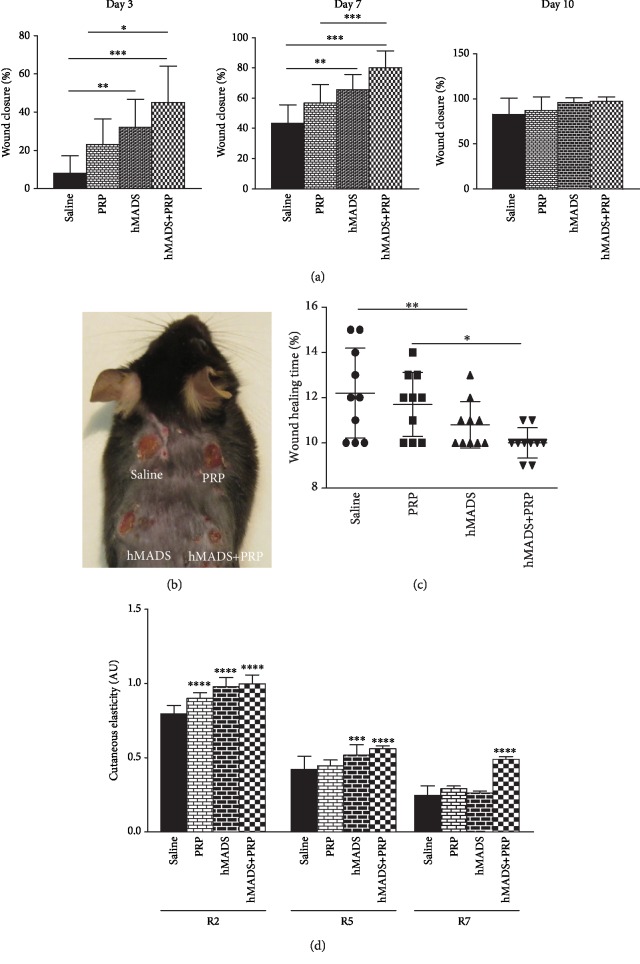Figure 1.
PRP treatment improves the healing potential of human MSC (hMADS cells) following their engraftment into mouse wounds. (a) Closure rates of wounds treated with saline solution, PRP, hMADS cells, or hMADS cells in combination with PRP at day 3, day 7, and day 10 following surgery. (b) Representative photograph of mouse back with skin wounds at day 3 following injury and treatment with either saline solution, PRP, hMADS cells, or hMADS cells in combination with PRP, respectively. (c) Wound healing times from mouse wounds treated with either saline solution, PRP, hMADS cells, or hMADS cells in combination with PRP, respectively. (d) Biomechanical parameters R2 (gross elasticity), R5 (net elasticity), R6 (viscoelasticity ratio), and R7 (biological elasticity) of the mouse healed wound following their treatment with either saline solution, PRP, hMADS cells, or hMADS cells in combination with PRP, respectively. (a–d) Results represent the mean ± SD obtained from n = 10 mice. ∗p < 0.05, ∗∗p < 0.01, ∗∗∗p < 0.001, ∗∗∗∗p < 0.0001.

